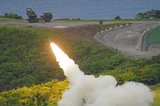German Army facing 'big gaps' as spending cuts bite
Germany's armed forces are being pushed beyond their limits as Berlin makes greater international commitments while failing to invest in and reform the military, according to a report published on 20 February.
‘The army's readiness to deploy has not improved in recent years, but instead has got even worse,’ parliamentary armed forces commissioner Hans-Peter Bartels said as he presented his annual findings, pointing to ‘big gaps’ in personnel and equipment.
By the end of 2017, all Germany's submarines were in drydock for repairs, while in recent months there have been periods where none of the German Air Force's 14 A400M transport planes are airworthy.
The litany of disrepair continues through fighter planes, tanks, helicopters and ships lamed by bad planning and a lack of spare parts.
German Air force pilots are unable to train as their aircraft are grounded for maintenance for much of the year, the report noted.
Spending on defence has been cut repeatedly since 1990 and the end of the Cold War, leaving the army with often outdated equipment and the defence industry unable to suddenly increase production to fill the gaps.
Bartels said: ‘Despite government promises to find more cash, tasks for which there are supposed to be additional people and equipment in future are already upon us. Soldiers already have to accomplish them today as best they can, using whatever is to hand.’
The grave state of the German Army has persisted even as leaders in Berlin commit troops to increasing numbers of foreign deployments – ranging from their traditional role deterring Russian forces in Europe alongside NATO partners to interventions in conflict zones like Mali or Iraq.
Allies of Europe's most populous nation and largest economy, from Washington to Warsaw, complain that Germany is not doing enough to get its army fighting fit.
Polish Prime Minister Mateusz Morawiecki complained recently of ‘free riders’ in NATO failing to spend enough and ‘endangering unity’ in the ranks of the alliance, in comments many saw as directed at his western neighbour.
And US President Donald Trump has reiterated years-old US complaints that Germany does not live up to its NATO commitment to spend 2% of gross domestic product on defence.
Germany presently spends just 1.2% of GDP on its military.
German media recently reported that as well as tanks, Germany's troops supposed to join a NATO ‘rapid reaction force’ lacked protective vests, winter clothing and tents.
‘We will make the best possible equipment, training and support available to our soldiers,’ German Chancellor Angela Merkel's conservative CDU said in a coalition agreement sealed with the Social Democratic Party (SDP) that is still to be approved by SDP members.
But even if a prospective new Merkel government loosens the purse strings, ‘we wouldn't be in a position to spend more money with our present procurement structures,’ Bartels said.
More from Defence Notes
-
![Taiwan approved for $11 billion weapon purchase from US]()
Taiwan approved for $11 billion weapon purchase from US
The US State Department’s approval of a multi-billion-dollar sale of weapons to Taiwan includes tactical mission networks equipment, uncrewed aerial systems, artillery rocket systems and self-propelled howitzers as well as anti-tank guided missiles.
-
![US National Security Strategy prioritises advanced military capabilities and national industry]()
US National Security Strategy prioritises advanced military capabilities and national industry
The 2025 NSS has emphasised investment in the US nuclear and air defence inventory and national industry, but it leaves multiple unanswered questions on how the White House will implement this approach.
-
![Canada set to look away from its neighbour and across the Atlantic for partners]()
Canada set to look away from its neighbour and across the Atlantic for partners
While non-EU UK struggles to join the Security Action for Europe initiative, which provides loans for defence programmes, Canada has become the first country outside Europe to get access – and did so for a nominal fee.
-
![NATO experiments with solutions to integrate networks, AI and uncrewed systems]()
NATO experiments with solutions to integrate networks, AI and uncrewed systems
During the latest edition of the NATO DiBaX, the alliance tested multiple capabilities to inform requirements for future efforts.
























